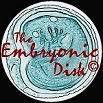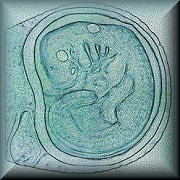

Locations
across the United Kingdom and the Republic of Ireland where
'The Embryonic Disk' is in institutional use
|
|
Users and their
comments : 2
"The
response from our new-curriculum medical students to The Embryonic
Disk has been very positive."
Sarah Mackay, University of Glasgow Medical School
"The
program ... works well and is easily accessible without specialist
knowledge." "The potential of the medium is used well ... the
descriptions and figures are clear."
Ronald Bleys in the Newsletter of the Dutch Anatomical Society
"Both the
staff and students at ICSM are really enjoying using The Embryonic
Disk - it has made such a difference to our teaching and the students
are really getting to grips with 3D concepts ... thanks for making
my life a whole lot easier."
Diana Watt, Brighton and Sussex Medical School
"We all find
it extremely helpful, especially when interpreting embryology
in a 3D perspective, and the picture interaction is great."
A medical student at Imperial ordering a personal copy
"I am writing
to thank you for the 'Embryonic Disk' you so kindly sent to the
School. The students were very impressed by it and would like
to order some for themselves."
Yasmin
Dsouza, London School of Osteopathy
|
 |
 |
|
"I
used your excellent Embryonic Disk as part of the Learning Landscape
for our current group of Stage 1 students and I have to say that it
was a great success ... I found your succession of pictures on formation
of the ovum and sperm to be absolutely invaluable for short demonstrations
of these processes." Tim Chard, Bart's and the Royal London Medical
and Dental School
"Thank
you very much for your speedy sending of 'The Embryonic Disk'. I find
it exceedingly useful and know that most of my fellow students use it
as a main source of learning for embryology and development."
"A big thankyou for your program. Now that I know I passed the
Phase 1 exams, I can honestly say it was a great help!!" Two more
ICSM medical students
"Postgraduate
nursing students who come to Southampton to be trained and educated
as Advanced Neonatal Nurse Practitioners undertake a year long course
in biomedical sciences and medicine which is then applied to the care
of the neonate ... I just wanted to let you and Dr Osmond know how much
our students have used and appreciated the CD-ROM. They have found the
content appropriate and felt it has prepared them well for the anatomy
and physiology sessions which followed." Susan L Smith, Division
of Child Health, University of Southampton
"Clearly
the ideal way to illustrate embryogenesis is by animated sequences ...
these are very well done, especially the sagittal view of embryonic
folding, which not only fulfils my students’ dream of showing how
the proximal yolk sac contracts circumferentially to form the gut, but
explains how the allantois and yolk stalk become surrounded by the expanding
amnion to form the umbilical cord."
Gillian Morriss-Kay in Trends in Genetics
Now
the precautionary note:
"I
would hesitate to direct students to the raw CDs without guidance".
Gillian Morriss-Kay in Trends in Genetics
We accept this as fair comment. Our CD is easy
to use in a technical sense but it contains a large amount of fairly
complex learning material. Those students who buy the CD for themselves
are motivated to explore and find out what it offers, but in general
our view (supported by UCL student feedback) is that no resource, not
even a textbook, gives full value unless it is actively integrated into
course teaching.
Effective ways of doing this include:-
- Recommending
‘The Embryonic Disk’ as a resource for the completion
of one or more worksheets on specific topics, early in the course.
- Requiring
students to complete particular true/false question sets as part
of their in-course assessment, and/or including our questions in
summative examinations. (The copying of questions for this purpose
is permitted, on terms and conditions
that don’t involve payment and are easily met.)
- Using images
from ‘The Embryonic Disk’ in lectures and/or course notes.
(To make this easier we include full-screen versions of key
animations within the program, and we offer sets of lecture
slides [as PowerPoint shows backed up by JPEGs]
based on the high-resolution originals of many of the other images.
Users who have purchased our Slide Collections or Teaching Packs
are automatically permitted to reproduce the images in printed
course-notes distributed to their own students, and on password-limited
intranet sites confined to their own institution, thus avoiding
the copyright problems faced by tutors who derive lecturing materials
from standard published sources.)


